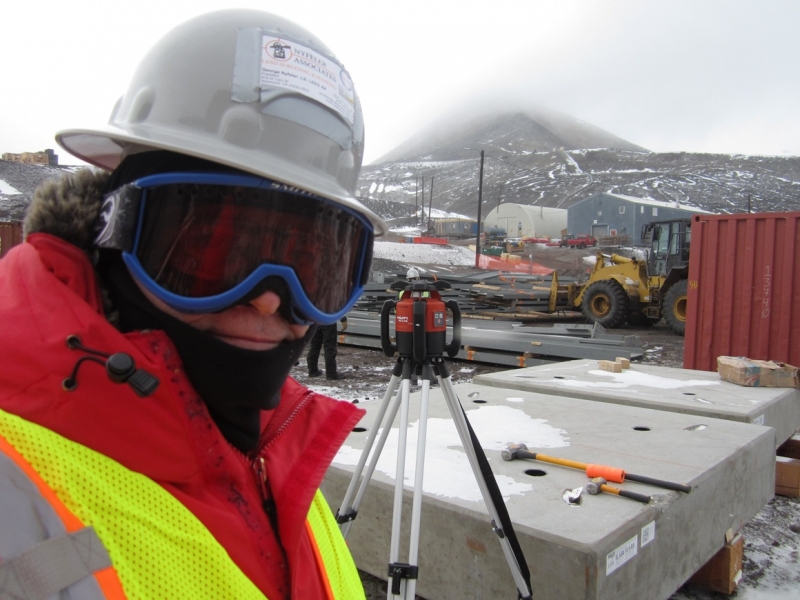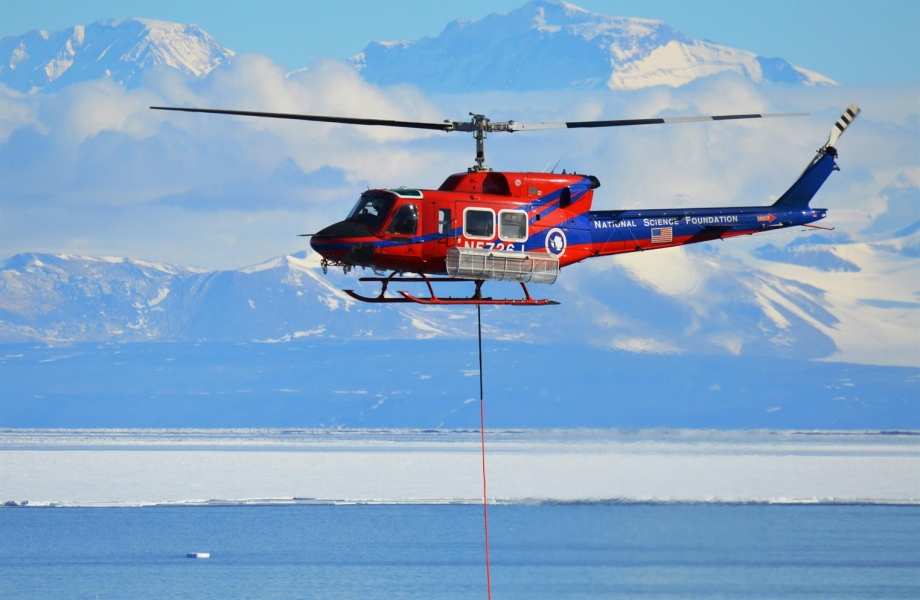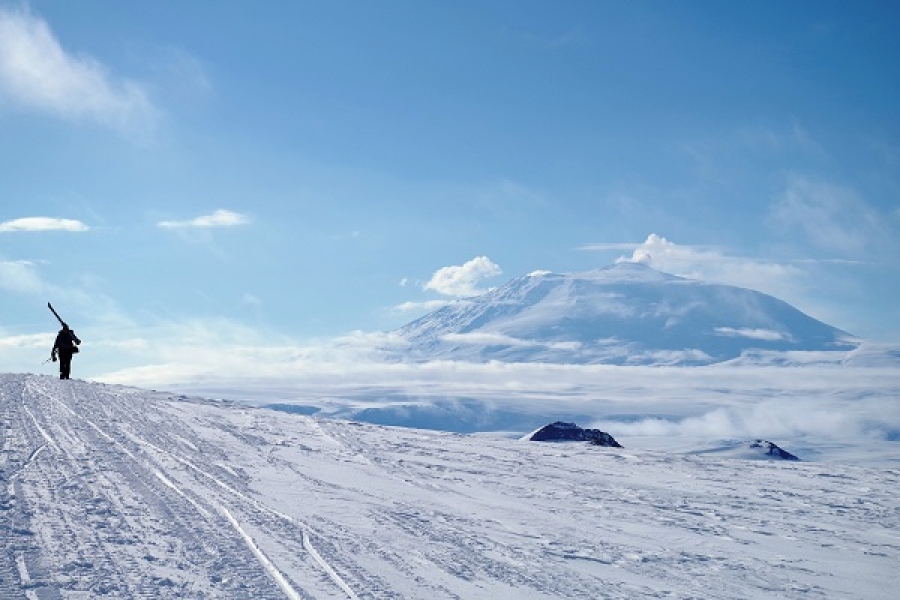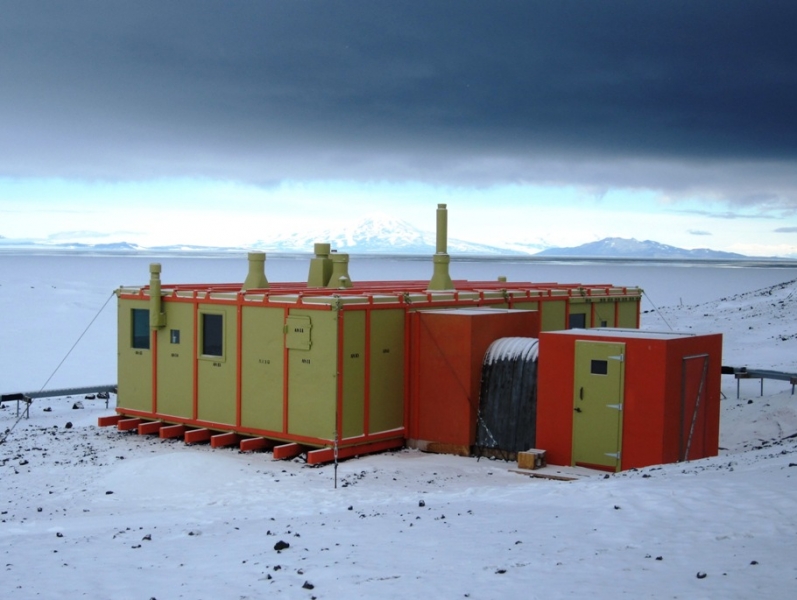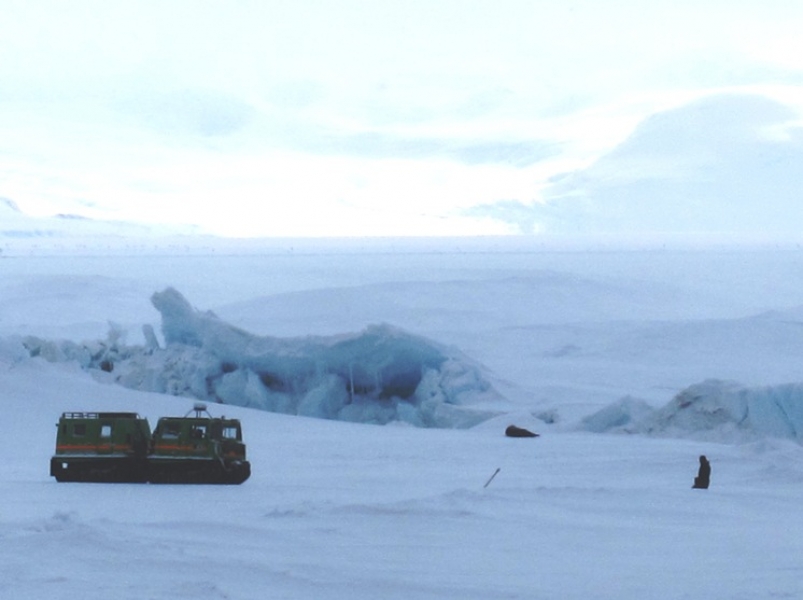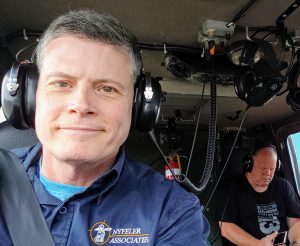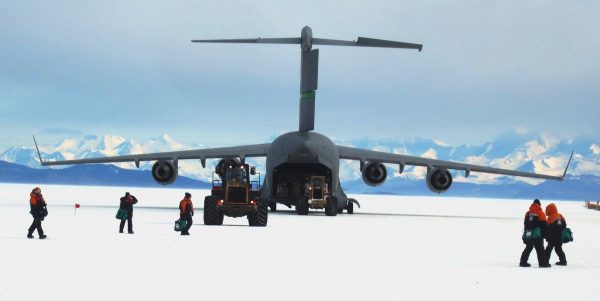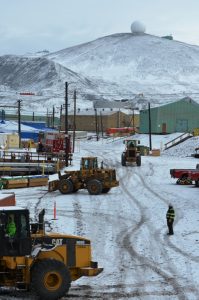However cold it gets in Richmond today, it’s not cold enough for George Nyfeler.
The president of downtown-based surveying firm Nyfeler Associates is in the home stretch of a three-week job in Antarctica, where late-summer temperatures have ranged from 20 degrees Fahrenheit to just below zero.
The job – a survey project for engineering giant Parsons at the National Science Foundation’s McMurdo Station – is the remotest yet for Nyfeler, whose firm’s work in locations such as Colorado and Oregon are sometimes coordinated with Nyfeler’s desire for travel and adventure.
While he’s had one day to ski the frozen continent’s slopes, the rest of Nyfeler’s time on “The Ice” has been all work, he said.
“It’s still work,” Nyfeler said in a phone call from the site, about 700 miles from the South Pole. “When you’re working, you kind of get lost in it and forget for a little while where you’re at.”
One lost day
The 17-hour time difference likely contributes to that, as Nyfeler said he essentially lost a day on the five flights it took to get to the site on the south tip of New Zealand-claimed Ross Island.
“The plane from San Francisco to Auckland left on the second, and we landed in Auckland on the fourth, so I missed Sunday, Feb. 3. That just didn’t happen for me,” Nyfeler said, laughing.
Parsons hired Nyfeler to provide construction crews with elevation update shots for building extension footers. The California-based company landed a contract last year as the general contractor for infrastructure improvements at McMurdo, which was built more than 60 years ago.
Because Antarctica is covered in frozen water, Nyfeler said the surface is constantly moving, necessitating the elevation updates he’s shooting. He said the runway where he arrived via a Boeing C-17 cargo transport moves a foot a day.
“It’s a different place,” he said. “I haven’t seen a penguin yet, but should this afternoon, as they seem to like the airstrip. Most landing aircraft do a flyover to check for them, call for penguin chasers to get them clear, circle around and come in again.”
Due to the scope of the work, Nyfeler manned the job solo, though he said he’s negotiating a two-year project that could bring back two or three of his surveyors at a time for a pair of five-month stints through 2021.
“Finding employees willing to be here that long is a challenge,” Nyfeler said, adding that he has partial project commitments from some of his employees and interviewed another surveyor in her seventh season at McMurdo who might join the team.
Tough interview process
Nyfeler said he landed the job through contacts he has at Parsons, which he said hires surveyors by invitation only and through a competitive process. Beyond relationship-building, he said other challenges include the physical demands of the work, which requires multiple medical tests and a months-long review by a university.
“I’ve known some people at Parsons for 20 years,” he said. “It’s the personal connection, and they know that we’ve done challenging work and, if things go sideways, we can figure it out. They’ve only got another three or four weeks before the construction season shuts down. That’s when the sun starts to go down.”
Nyfeler said such conditions in Antarctica’s austral summers, when the sun remains in the sky, have been eye-opening, literally.
“The sun doesn’t go down. It does a big loop in the sky and doesn’t even partially sets. It’s just light out the whole time,” he said. “There are three bars here, you come out at 11 o’clock at night, and before you leave, you put your sunglasses on. It’s weird.”
Nyfeler said he’s met a lot of interesting people with various jobs at McMurdo, which is the largest station on Antarctica and serves as the logistics hub of the U.S. Antarctic Program.
“One of the dishwashers was formerly a patent attorney. Ph.D.s are common among the scientists here and sometimes also among the building custodians,” Nyfeler wrote. “I have found that sitting with new people for meals (all in the same galley, for all 949 of us) can be a challenging environment to compete intellectually!”
Nyfeler is scheduled to head back home this Sunday, with a stop in New Zealand along the way for a 50-mile backpacking trip he worked into his schedule.
While the dry and frigid climate has added to the challenge, Nyfeler said the job actually timed right weatherwise.
“It gets cold here, but I got really lucky,” he said. “It’s not as cold as Chicago three weeks ago, that’s for sure.”

